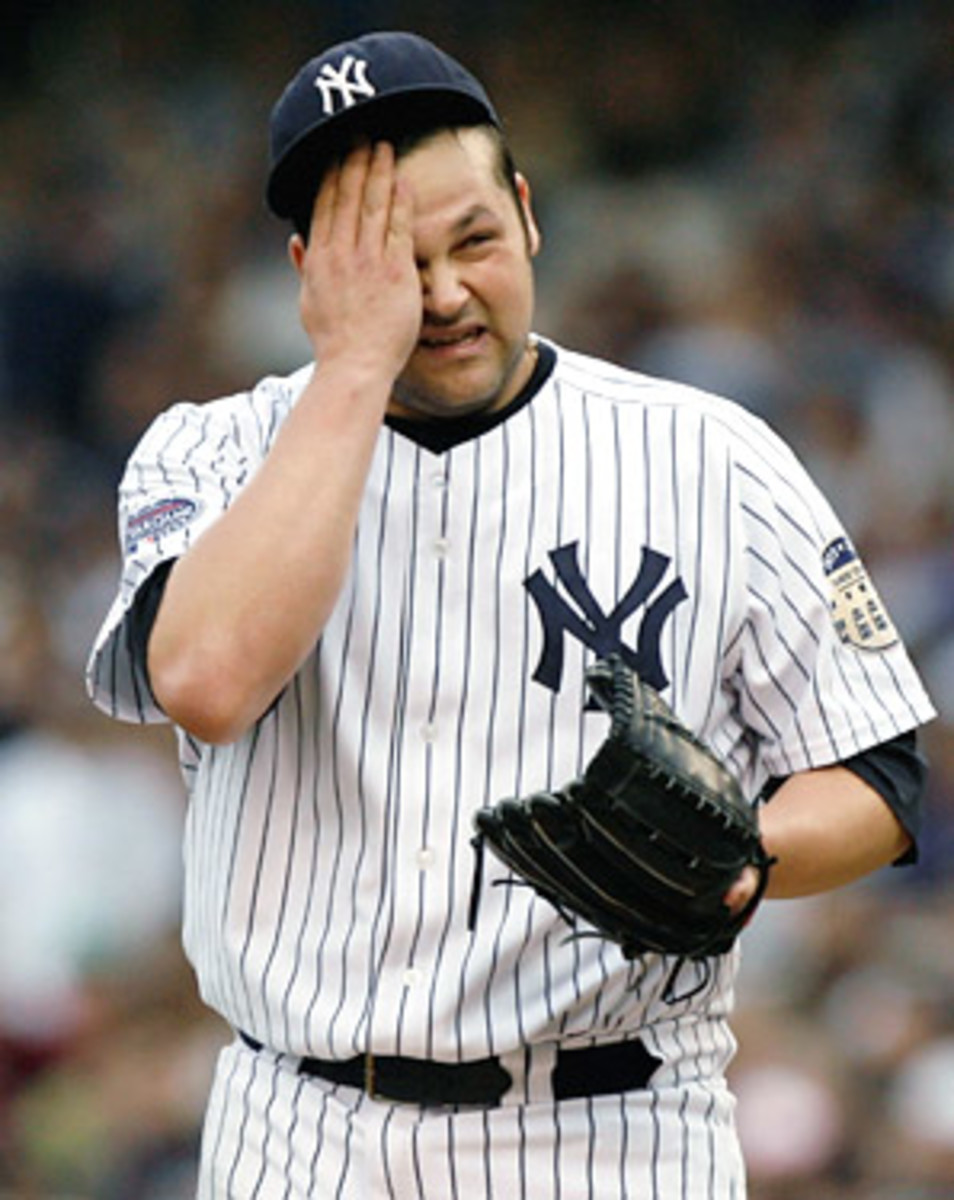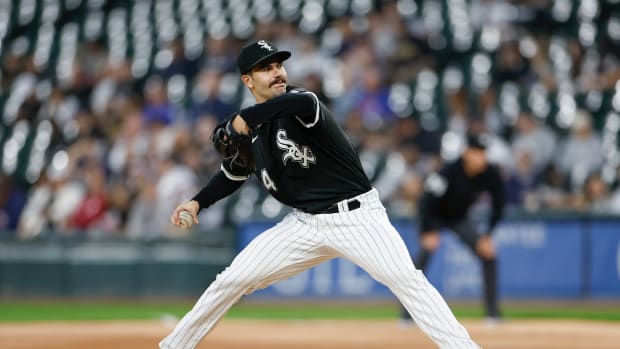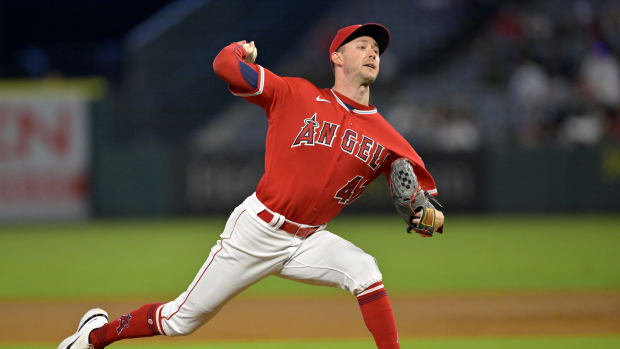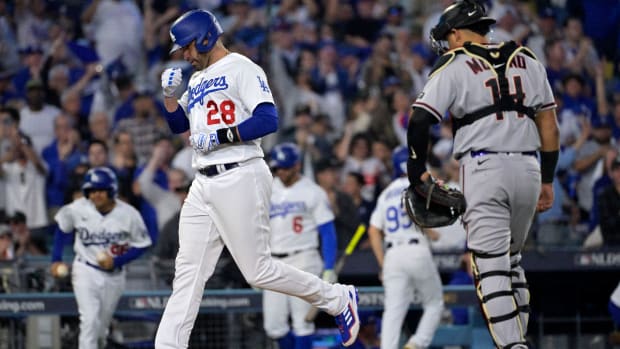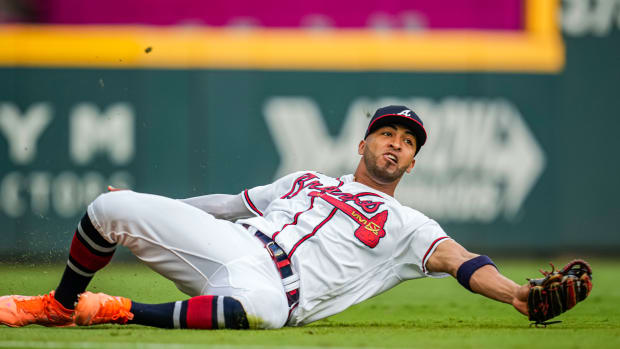False start for Chamberlain, Yanks
That was the collective thought running through the minds of the 53,629 fans who showed up at Yankee Stadium on Tuesday night to watch Joba Chamberlain's first major league start, and perhaps, breathe some life into a Yankees' season still stuck in neutral.
But if they came hoping to see a turning point, what they got instead was another twist in the ongoing Chamberlain circus, a disappointing performance that offered more questions than answers, both from Chamberlain and the bullpen buddies he left behind. In the longest outing of his brief career, Joba definitely did not rule. He lasted 62 pitches, throwing 32 for strikes. He allowed only one hit and fanned three but walked four in 2 1/3 innings.
Gone was the Chamberlain that has been a sensation in New York since his callup last August, despite only pitching 47 2/3 innings: a flamethrowing phenom who punctuated his strikeouts with exuberant fist pumps and whose mere presence seemed sure to signal a Yankees victory. But, charged with putting the Yankees on the winning track from the first inning on rather than keeping them there in the late innings as he had as a reliever, Joba faltered right from the beginning.
Greeted by a standing ovation as he walked to the mound, and engulfed by flash bulbs as he threw his first pitch, it was immediately obvious that this was not a normal start and, aside from a fastball he threw past leadoff batter Shannon Stewart that caused Stewart to swing so hard his helmet fell off, this was not normal Chamberlain. He walked Stewart, and balked him to second. A groundball by Alex Rios got an out, but also scored Stewart. Given a fresh chance to settle down with the bases empty and two away, Chamberlain allowed a single and two full-count walks to load the bases before escaping the jam by striking out Rod Barajas.
The 38-pitch inning was more than halfway to his prescribed pitch limit of 65-70 (Yankees manager Joe Girardi even hinted that had Chamberlain gone past 40 in the first, he would have been yanked). Though he had little trouble the rest of the way, he had to leave the game before he, or anyone else, knew what the real results were. "I was mad at myself," Chamberlain said. "You know you've only got so many pitches and I didn't do a good job of conserving those pitches."
"Time will tell," said Girardi. "You don't make an evaluation in a two week period. It's still his first start. You can't forget that."
Nor can it be forgotten that the Yankees really didn't learn much of anything about Chamberlain on Tuesday night. Even acknowledging that long-term forecasts are difficult to project from such a small sample size, it was the pitches Chamberlain did not throw that were nearly as noteworthy as the ones he did. He entered the game with, as Toronto manager John Gibbons said afterward "overpowering stuff" -- a fastball that topped 100 mph on the stadium scoreboard, and a ferocious, darting slider. But the curveball and changeup that had been mostly kept in mothballs while Chamberlain barrelled through a smattering of hitters in his relief work were rarely seen as he engaged a lineup that would get more than one look at him. By his own estimation, Chamberlain threw just two curveballs (one for a get-ahead strike to Rios) and no changeups. His ability to use his third and fourth pitches at all, much less to get critical outs, is still far from determined. Afterward, Chamberlain said he'd stick with his fastball as his primary option "until they start putting good swings on it."
What the Blue Jays did that could offer a lesson to future opponents was to not swing much at all. While Chamberlain said he used his emotions to his advantage and vowed to "attack the zone" more in the future, it's hard not to think that he was guilty of overthrowing and the Blue Jays refused to nibble at his pitches just off the edge. Until Chamberlain proves he can harness his emotion at the start of a game and throw strikes, teams will be wise to do the same.
More will be known after Chamberlain's next start, Sunday against the Royals in New York, when he is expected to stretch to 75-80 pitches. So much thus far about his performance has been about the number one: one inning at a time, one time facing a hitter in a game, one (potential) jam to escape from. Once Chamberlain is forced to do those things multiple times in a single outing will the true answers about this move start to arrive.
If his value as a starter was difficult to discern from his 53-minute cameo, his value as a reliever came into even sharper focus. Handed a manageable 3-2 deficit, a trio of seventh-inning relievers (Jose Veras, Edwar Ramirez and LaTroy Hawkins) didn't so much bridge the gap to a potential Yankees win as implode it, allowing six runs that turned the game into a rout. While the Blue Jays were circling the bases (at one stretch batting around by going 4-for-5 with four walks and scoring five runs), it was hard not to recall that, until very recently, the Yankees had a reliever who could come in during just such a situation and slam the door on an opponent to keep his team in striking position.
Joba Chamberlain.
Of course, by that time, Chamberlain's night was long over. The Yankees' road to figuring out whether this will work or not, has only just begun.






























